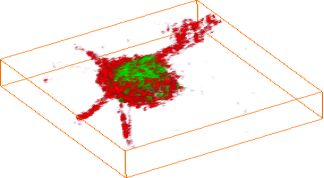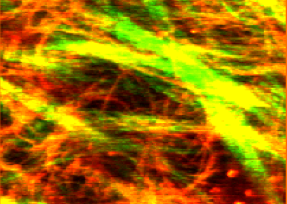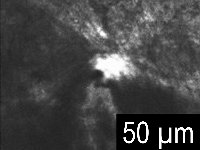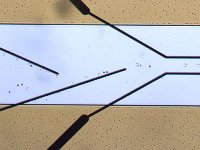Biomedical engineering research includes: lab-on-a-chip, single-cell characterisation, micro-electrode arrays for neural implants, scaffolds for tissue engineering, implantable devices such as stents wireless cardiac monitoring using artery-implanted stents, MEMS devices for navigated surgery, hearing-aid prosthesis, MEMS ultrasound imaging, bio-photonics, DNA sequencing, targeted drug delivery.
Faculty Involved
Research Topics
Bio-photonics
 Biophotonics is the use of light (photons) to study biological material. Light interacts with living organisms and organic material, to provide useful information, such as early cancer detection, glucose monitoring for diabetes patients. Techniques include microscopy, imaging, and absorption spectroscopy.
Biophotonics is the use of light (photons) to study biological material. Light interacts with living organisms and organic material, to provide useful information, such as early cancer detection, glucose monitoring for diabetes patients. Techniques include microscopy, imaging, and absorption spectroscopy.
Bio-sensors
We are developing sensor technologies to measure quantities with relevance for the biomedical field. These technologies enable either monitoring or characterization of biomedical subjects and processes, including in-vivo glucose monitoring and on-chip cell characterization.
Biological Imaging

Optical imaging provides a noninvasive way to visualize cellular and tissue structures, observe their functions, and potentially detect dysplasia and cancer. We are using two cutting-edge techniques capable of non-invasive, high-resolution imaging in thick, scattering biological tissues: Multiphoton Microscopy (MPM) and Optical Coherence Tomography (OCT). We are developing a multi-modality microscopy system integrating MPM and OCT on a single platform.
Biomaterials

An engineered biomolecular interface between implantable biomedical microdevices and the surrounding tissue is one of the key issues for long-term implant functionality. Biodegradable polymer or hydrogel coatings can be used for local drug delivery, in which the release of an antibiotic, anti-inflammatory agent, neural growth factor, or other bioactive molecule will mitigate tissue reaction to the implanted device.
Drug Delivery

We are working on advanced drug delivery modalities. These include the development of drug delivery vehicles and targeted and timed drug deployment strategies. The goals of this research is to confine medication to target areas in order to reduce side effects of the treatment.
Implantable Devices

Implantable biomedical microdevices will have many therapeutic applications. Among the most successful examples are cochlear implants and deep-brain stimulators. Current efforts include targeted drug delivery systems, visual prostheses, electrodes for nerve regeneration, and microelectrodes for neural recording and stimulation. Implantable diagnostic devices may also feature contactless powering and RF telemetry for disease monitoring.
Lab on a chip, micro total analysis systems

The miniaturization and integration of traditional benchtop assays onto microscale “lab on a chip” platforms promise advantages in cost-efficiency, lower reagent consumption, and faster analysis times. Microfluidic systems allow manipulation and control of individual biological elements (cells, proteins, and other biomolecules) and their environment, and their application in cell culture and characterization will contribute to the development of new diagnostics and therapies.
Research Projects
Angular rate sensors for Automobile and Biological projects
Gyroscopes are used to sense angular rate and when used along with accelerometers can be used as effective navigation sensors. Due to their tiny size(1cmx1cm)die and high sensitivity they could be used in minimally invasive surgery.